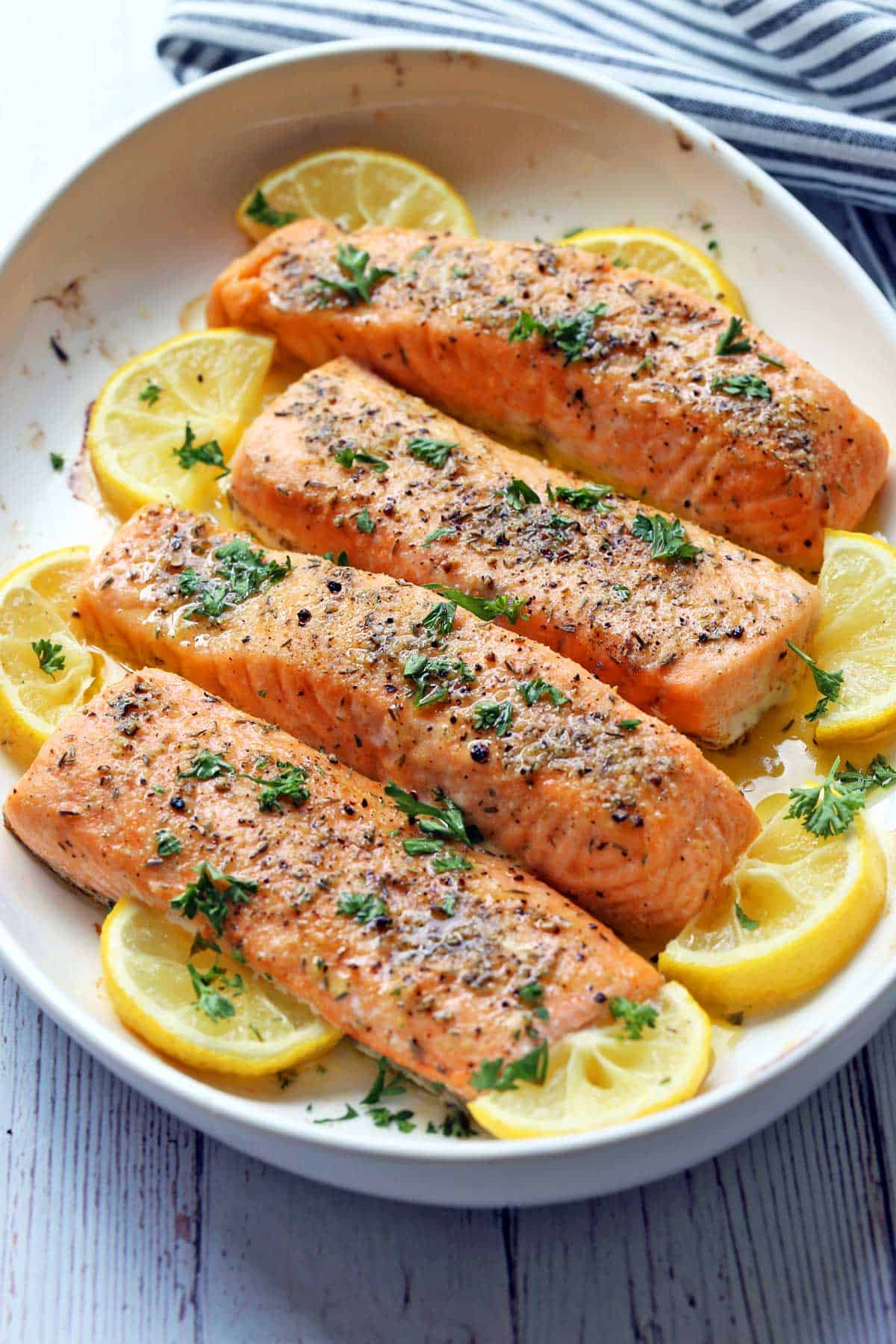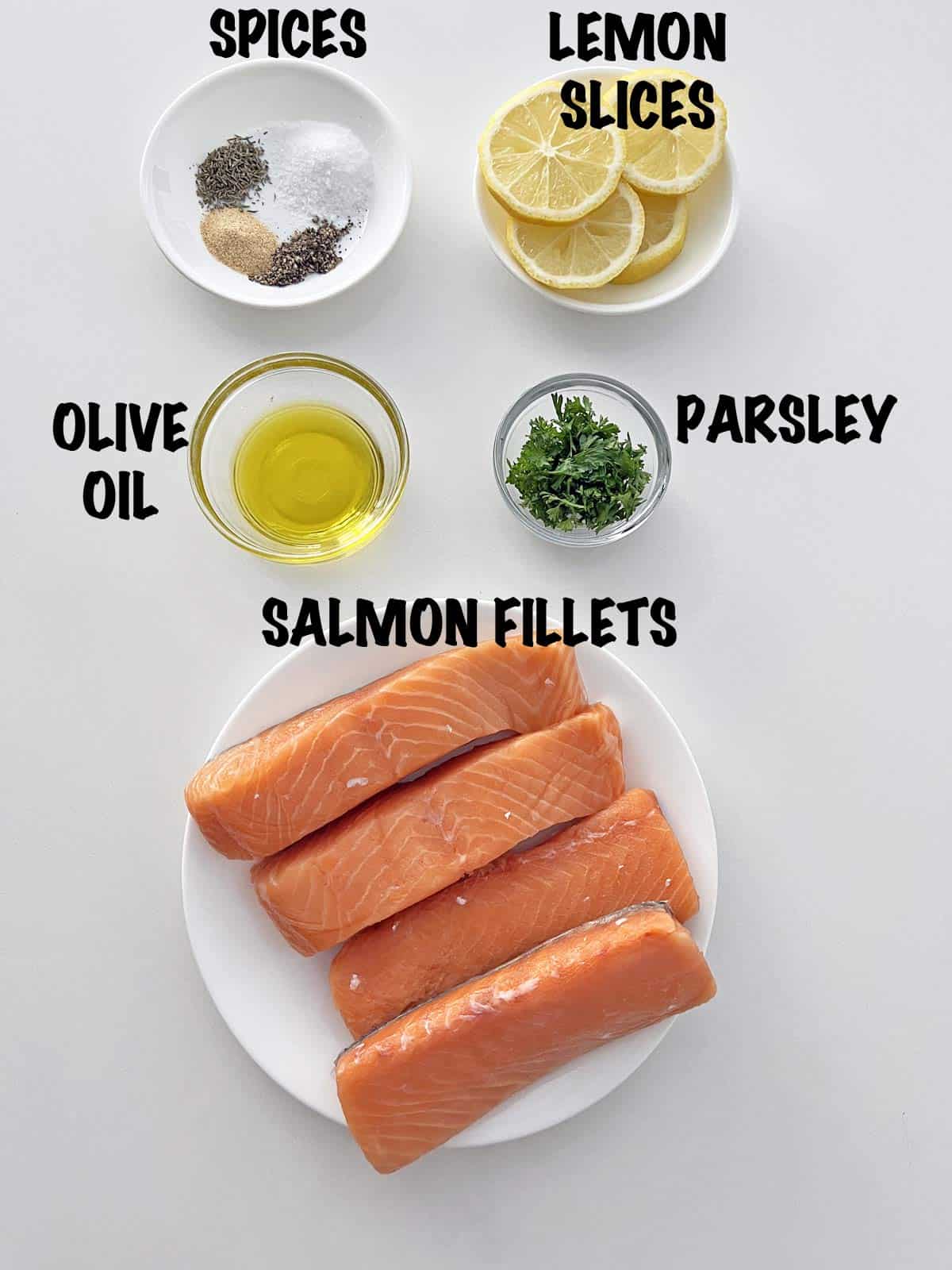Welcome to the kitchen, aspiring chefs! Today, we’re diving into the art of baking a mouthwatering 6 oz salmon fillet. As a professional chef, I can assure you that there’s something truly magical about the delicate balance of flavors and textures that can be achieved when this beautiful fish meets the heat of the oven. Whether you’re a seafood enthusiast looking to expand your culinary repertoire or a cooking novice ready to embark on a delicious adventure, this guide will equip you with all the knowledge and techniques you need to create a perfectly baked salmon that will leave your taste buds singing. So, let’s roll up our sleeves, preheat that oven, and get ready to elevate your seafood game to new heights!
If you’re looking for a quick and nutritious meal, baking salmon is the way to go. This recipe will guide you through the steps of baking a perfectly cooked 6-ounce salmon fillet. With just a few ingredients, you’ll have a flavorful and tender piece of fish on your plate in no time. So let’s get started!
Ingredients:
- 1 6 oz salmon fillet
- 1 tablespoon olive oil
- 1 teaspoon salt
- 1/2 teaspoon black pepper
- 1 lemon, sliced
- 2 sprigs of fresh dill
General Information:
- Making Difficulty: Easy
- Preparation Time: 5 minutes
- Cooking Time: 15-18 minutes
- Serving Size: 1
Instructions:
Step 1: Preparing the Salmon
Start by preheating your oven to 400°F (200°C). Place the salmon fillet on a baking sheet lined with parchment paper. Drizzle the olive oil over the fillet and use your fingers to spread it evenly. Sprinkle the salt and black pepper on both sides of the fillet, ensuring it is evenly seasoned. Place the lemon slices on top of the fillet and tuck the fresh dill sprigs underneath. These ingredients will infuse the salmon with a burst of flavor as it bakes.
Pro tip: If you prefer a citrusy flavor, squeeze some lemon juice over the fillet before adding the lemon slices.
Step 2: Preparing the Oven
Once your salmon is seasoned and ready to go, place the baking sheet in the preheated oven. Make sure to position the sheet in the center of the oven for even cooking. Set the timer for 15 minutes and let the salmon bake until it reaches your desired level of doneness. If you prefer your salmon more well-done, bake it for an additional 3-5 minutes.
Pro tip: To ensure the salmon cooks evenly, you can cover it loosely with aluminum foil during the first 10 minutes of baking.
Step 3: Checking for Doneness
After the initial baking time, carefully remove the salmon from the oven and test for doneness. Insert a fork or a small knife into the thickest part of the fillet and gently twist. If the flesh flakes easily and appears opaque, your salmon is perfectly cooked. If it seems too undercooked, return it to the oven for a few more minutes.
Step 4: Resting the Salmon
Once the salmon is cooked to your liking, remove it from the oven and let it rest for a couple of minutes. This allows the juices to redistribute within the fillet, ensuring a moist and tender result. While the salmon is resting, the residual heat will continue to gently cook the fish.
Pro tip: If you’re preparing multiple servings, cover the rested salmon with aluminum foil to keep it warm while you finish baking the remaining fillets.
Step 5: Serving the Salmon
Transfer the rested salmon to a serving plate or individual plates. The lemon slices and fresh dill can be left on for presentation or removed if desired. Garnish with additional lemon wedges and fresh dill, if desired. Serve the salmon alongside your favorite side dishes, such as roasted vegetables or a green salad.
Pro tip: A simple squeeze of lemon juice over the baked salmon just before serving adds a refreshing tanginess to each bite.
Step 6: Storing Leftovers
If you have any leftover salmon, you can store it in an airtight container in the refrigerator for up to 2 days. It can be enjoyed cold or gently reheated in the oven or microwave. Leftover salmon is perfect for adding protein to salads, sandwiches, or even pasta dishes.
Step 7: Enjoying Your Baked Salmon
Now that you’ve mastered the art of baking a 6 oz salmon fillet, it’s time to enjoy the fruits of your labor. Indulge in the juicy, flaky, and flavorful fish that you’ve created. Whether you’re cooking for yourself or impressing guests, this simple and delicious recipe is a winner every time.
Remember, cooking is an art, and each person has their own preferences when it comes to flavors and doneness. Feel free to experiment with additional herbs, spices, or marinades to create a variety of salmon dishes that suit your taste buds.
So put on your apron, pick up that spatula, and let your culinary creativity take flight. Happy baking!
Important Things to Keep in Mind When Making This “How to Bake 6 oz Salmon” Recipe
Making a perfectly baked 6 oz salmon is an art that requires attention to detail and a few key tips. Whether you’re a seasoned chef or a novice in the kitchen, keeping these important things in mind will help you create a melt-in-your-mouth, restaurant-worthy dish. From selecting the right salmon to ensuring proper seasoning and cooking techniques, mastering this recipe will have you impressing your guests and satisfying your taste buds.
1. Choose the freshest salmon: When it comes to salmon, freshness is key. Look for salmon that is firm to the touch and has a vibrant color. Opt for wild-caught salmon whenever possible, as it tends to have a fresher and more flavorful taste compared to farmed salmon. Your local fish market or a reputable seafood counter at the grocery store are both great places to find high-quality salmon. Don’t be afraid to ask the fishmonger for advice on the best options available.
2. Prep the salmon properly: Before seasoning or cooking, make sure to pat the salmon dry with a paper towel. This helps remove any excess moisture that could prevent the salmon from achieving that desirable crispy exterior. Next, lightly season the fish with salt and pepper, or experiment with other seasonings such as lemon zest, dill, or garlic powder to enhance the flavors of the fish. Allow the salmon to sit at room temperature for about 10 minutes before cooking to ensure even cooking throughout.
3. Master the cooking technique: There are various ways to bake salmon, but the most foolproof method involves using a preheated oven at 400°F (200°C). Line a baking sheet with parchment paper or aluminum foil for easy cleanup. Place the seasoned salmon on the prepared sheet and bake for approximately 12-15 minutes, depending on the thickness of the fillets. The salmon should easily flake with a fork and have a slightly pink center. Be cautious not to overcook the salmon, as it can result in dry and tough meat. Remember that residual heat will continue to cook the salmon once it is removed from the oven, so slightly undercooking it is better than overcooking.
4. Pair it with complementary flavors: While a perfectly baked salmon is delicious on its own, pairing it with complementary flavors can take it to the next level. Squeeze a bit of fresh lemon juice over the cooked salmon to add brightness and balance to the richness of the fish. Fresh herbs such as dill, parsley, or chives also work wonders in enhancing the flavors. For a creamy and tangy touch, you can serve the salmon with a dollop of Greek yogurt or a homemade lemon-dill sauce. Additionally, consider serving it alongside a bed of roasted vegetables or a refreshing cucumber and tomato salad for a well-rounded and satisfying meal.
By keeping these important tips in mind, you’ll elevate your salmon-baking skills and create a dish that bursts with flavor and impresses your palate. Remember to start with quality ingredients, properly prep the salmon, master the cooking technique, and pair it with complementary flavors. With practice, you’ll soon be the go-to chef for perfectly baked 6 oz salmon among your family and friends.
## Frequently Asked Questions
### Q1: What is the best way to bake salmon?
A1: To bake salmon, start by preheating the oven to 425°F (218°C). Place the salmon fillet on a baking sheet lined with parchment paper or aluminum foil. Sprinkle your desired seasonings, such as salt, pepper, and herbs, over the salmon. Drizzle some olive oil on top to keep the fish moist.
Next, bake the salmon in the preheated oven for about 12-15 minutes, or until it reaches an internal temperature of 145°F (63°C). You can check the doneness by using a food thermometer inserted into the thickest part of the fillet. Once cooked, take the salmon out of the oven and let it rest for a few minutes before serving.
### Q2: Should I cover the salmon with foil while baking?
A2: It is not necessary to cover the salmon with foil while baking, but doing so can help retain moisture and prevent the fish from drying out. If you prefer a more moist and tender texture, you can cover the salmon loosely with foil during the first half of the baking time. This will trap the steam and keep the fillet juicy.
However, if you prefer a crispier crust on the salmon, leave it uncovered for the entire baking time. The uncovered fillet will develop a lovely browned top. Ultimately, the decision to cover the salmon with foil or not depends on your personal preference and desired outcome.
### Q3: How can I add more flavor to baked salmon?
A3: There are many ways to add delicious flavors to baked salmon. One simple way is to marinate the salmon in a mixture of your favorite herbs, spices, and a liquid like lemon juice, soy sauce, or teriyaki sauce. Let the salmon marinate in the refrigerator for at least 30 minutes or up to overnight before baking. This allows the flavors to penetrate the fish and enhance its taste.
Alternatively, you can create a flavorful sauce or glaze to accompany the baked salmon. Popular options include dill sauce, honey mustard glaze, or a tangy citrus sauce. Brush or spoon the sauce over the salmon before baking, or serve it on the side as a dipping sauce.
### Q4: Can I bake frozen salmon?
A4: Yes, you can bake frozen salmon without thawing it first. Preheat the oven to 425°F (218°C) and place the frozen salmon fillet on a baking sheet lined with parchment paper or aluminum foil. Bake for approximately 20-25 minutes or until the salmon reaches an internal temperature of 145°F (63°C).
Baking frozen salmon may require a slightly longer cooking time compared to thawed salmon. However, it is important to note that the texture of the cooked salmon may be slightly different from that of fresh or thawed salmon. The frozen salmon may be slightly more moist, but still delicious.
### Q5: How can I know when the salmon is cooked perfectly?
A5: The best way to determine if salmon is perfectly cooked is by using a food thermometer. Insert the thermometer into the thickest part of the fillet, making sure it does not touch the bone or the baking sheet. The salmon is cooked perfectly when the internal temperature reaches 145°F (63°C). At this temperature, the salmon will be opaque and flake easily with a fork.
If you don’t have a food thermometer, you can check the doneness visually. The salmon should be uniformly opaque throughout and have a slightly pink or coral color in the center. You can also gently press the fillet with a fork or your finger; it should be firm but still moist. Overcooking the salmon can result in a dry and tough texture, so it’s important to avoid leaving it in the oven for too long.

